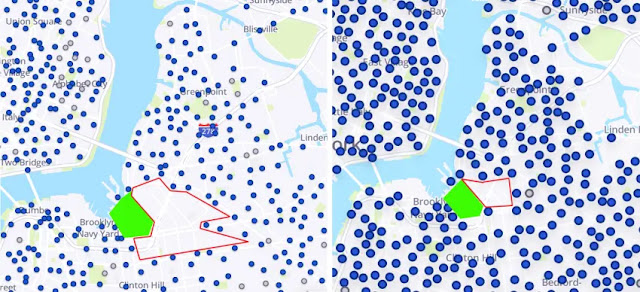“Very well then, I contradict myself (I am large, I contain multitudes)”
Walt Whitman may have given us one of the best definitions of good mental health. A corollary to that might be that maturity is understanding that we all have our contradictions: After all, who tries to live by any book or idea, to the letter, once he or she has had to hold down a job
Anyway, I won’t try to assess whether, or how well, some Hasidic men in Brooklyn understand their own internal (and sometimes external) juxtapositions. I do, however, find it interesting that when Citibike went online just over a decade ago, the Ultra-Orthodox community of South Williamsburg included some of the bike-share program’s most enthusiastic users—and some of its fiercest opponents.
While “Williamsburg” became synonymous with “hipster” and “gentrification,” the area south of the eponymous bridge to Manhattan remained one of this city’s two major Hasidic enclaves. (Borough Park is the other. East Williamsburg is, arguably, the heart of the Big Apple’s Puerto Rican community.) One notable difference between Hasidim and the hipsters and Nuyoricans is family size. That leaves little, if any room, for a bicycle in their living quarters.
Another visible difference is that from sundown on Friday to sundown on Saturday, streets on Hasidic neighborhoods are deserted, except when people are walking to or from shul. And, of course, there is sartorial style: It, shall we say, leaves much to the imagination.
That last point was an argument against installing Citibike ports in the neighborhood. Some Hasidic rabbis and other community leaders complained that those blue bikes streamed “immodest” riders—or, in thr words of one Reddit commenter “sexy ass hipster girls” —down their neighborhood’s streets.
A result of this tension was the “Hasidic hole” or, as one wag put it, “black hat hole” of Citibike availability. Hasidim were walking as much as a mile to access the bikes.
 |
| The map on the left reflects Citi Bike last year. The map on the right is the current coverage. (The green zone is the Brooklyn Navy Yard, which is not a public area) |
Recently, freshman City Council member Lincoln Restler, who is Jewish but not Hasidic or even Orthodox, has been doing what his predecessor Stephen Levin (also Jewish but not Orthodox) couldn’t. He has negotiated with Hasidic leaders to shrink that “hole” and make Citibike—which now includes eBikes—more accessible. He is also working to bring more bicycle infrastructure to a part of the city that is better-served than most.
His efforts might allow a community to accept its contradictions: People might profess shock and dismay over “sexy ass Hipster girls” (who, I assure them, don’t include me!) but they appreciate the convenience and fun of cycling.



































.jpg)











